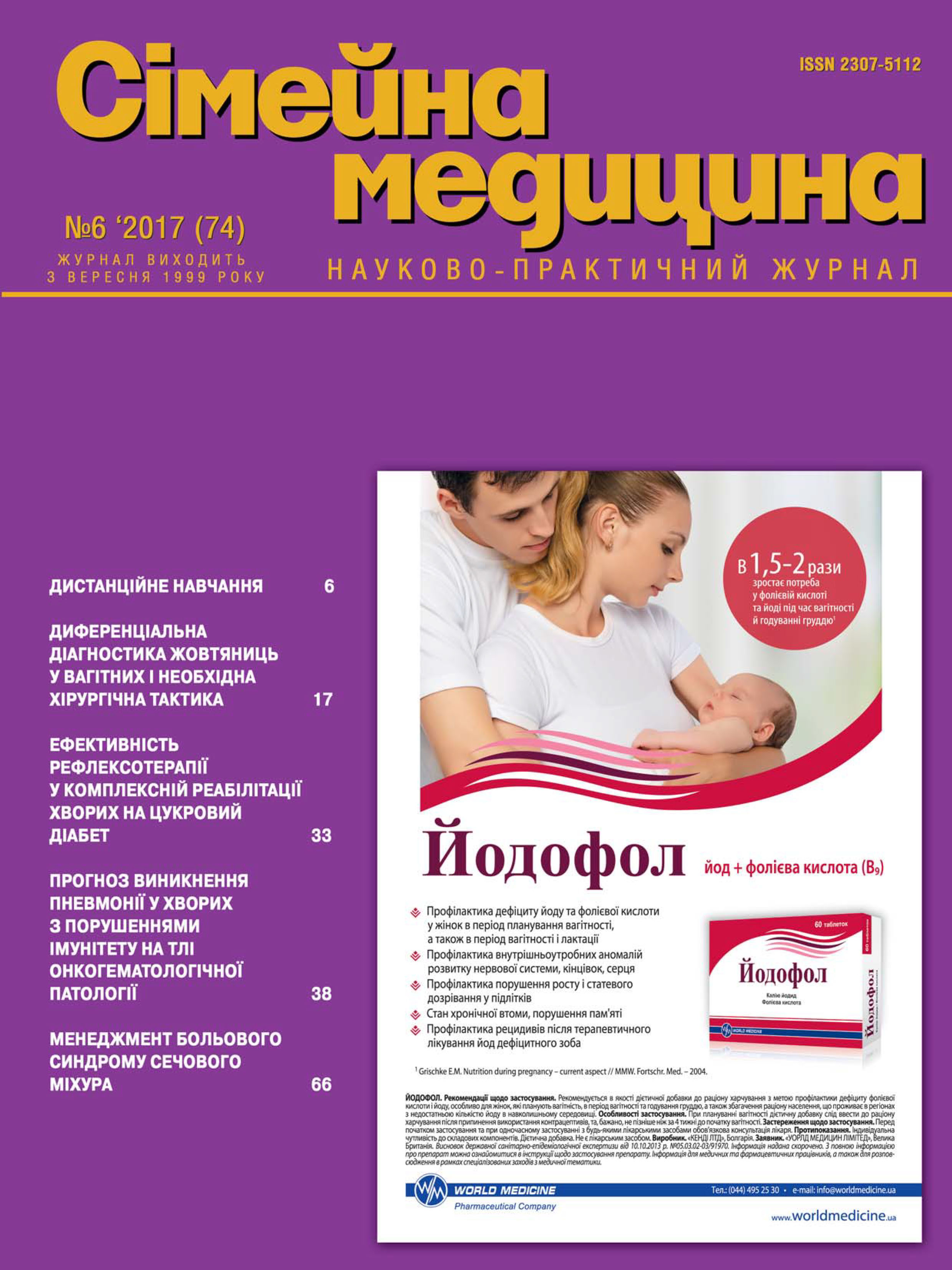Diagnosis and treatment of respiratory disturbances during sleep in patients with acute stroke
##plugins.themes.bootstrap3.article.main##
Abstract
The objective: to analyze the features of diagnosis and treatment of respiratory disturbances during sleep in patients with acute stroke (AS) with concomitant diabetes mellitus (DM).
Materials and methods. The study involved 300 patients (180 men and 120 women) aged 46 to 82 years who were diagnosed with acute ischemic stroke with comorbid diabetes on admission.
Results. When comparing the results of the use of various tracheotomy techniques in the Intensive Care Unit of the Kyiv Regional Clinical Hospital, it was established that percutaneous puncture-dilatational tracheotomy has several advantages over traditional tracheotomy. In particular, the peculiarities of the technique of performing the dilatational tracheotomy allow it to be performed in much shorter periods than the traditional one. Thus, the time for performing the manipulation in the main group of patients was 10.8 ± 3.6 min, whereas in the control group 1 49.7 ± 12.3 min (p <0.01).
Conclusions. The study found that the risk of respiratory disorders in diabetic patients with acute stroke (AS) is high (63,3%). Risk factors include male gender, obesity, high NIHSS score (15). The effectiveness of detection of obstructive sleep apnea (OSA) with the help of the Epworth Sleepiness Scale in stroke patients is unsatisfactory and is only 5,9%. For the purpose of diagnosing disorders of breathing during sleep in these patients should be performed at admission screening diagnosis of OSA to determine the need for respiratory support and tactics. The tactics of respiratory support in these patients should be as follows. When detecting patients with "soft" OSA (IAH 5115), "position" therapy is performed to minimize the patient's stay in the position on the back. In patients with IAH>15, atechnique of early non-invasive ventilation correction using constant positive airway pressure (CPAP) should be used.
##plugins.themes.bootstrap3.article.details##

This work is licensed under a Creative Commons Attribution 4.0 International License.
Authors retain the copyright and grant the journal the first publication of original scientific articles under the Creative Commons Attribution 4.0 International License, which allows others to distribute work with acknowledgment of authorship and first publication in this journal.
References
Геморагічний інсульт (внутрішньомозкова гематома, аневризмальний субарахноїдальний крововилив): екстрена, первинна, вторинна (спеціалізована) медична допомога та медична реабілітація. Уніфікований клінічний протокол медичної допомоги. – К.: Видавець Д.В. Гуляєв, 2012. – 96 с.
Зильбер А.П. Этюды респираторной медицины. – М.: МЕД-пресс-информ., 2007. – 792 с.
Шлапак І.П., Галушко О.А. Цукровий діабет: погляд з позиції лікаря-анестезіолога. – К.: Книга-плюс, 2010. – 160 с.
Javaheri S, Javaheri S, Javaheri A. Sleep apnea, heart failure, and pulmonary hypertension // Curr Heart Fail Rep. – 2013. – Dec; № 10 (4). – Р. 315–20. https://doi.org/10.1007/s11897-013-0167-3
Lin JJ, Lin KL, Wang HS et al. Occult infarct with acute hemorrhagic stroke in juvenile diabetic ketoacidosis // Brain Dev. – 2008. – № 30 (1). – Р. 91–93. https://doi.org/10.1016/j.braindev.2007.06.001
Nelles G, Busse O. Basistherapie auf der Stroke Unit. / In: Diener HC, Busch E, Grond M, Busse O. Stroke Unit Manual. – Stuttgart-New York; Thieme; 2005. – 208 p.
Priou P, Le Vaillant M, Meslier N. et al. Association between obstructive sleep apnea severity and glucose control in patients with untreated versus treated diabetes // J Sleep Res. – 2015. – Aug; № 24 (4). – Р. 425–31. https://doi.org/10.1111/jsr.12278 https://doi.org/10.1111/jsr.12278
Schober AK, Neurath MF, Harsch IA. Prevalence of sleep apnoea in diabetic patients // Clin Respir J. – 2011. – Jul; № 5 (3). – Р.165–72. https://doi.org/10.1111/j.1752-699X.2010.00216.x
Shibazaki K, Kimura K, Uemura J. et al. Atrial fibrillation is associated with severe sleep-disordered breathing in patients with ischaemic stroke and transient ischaemic attack // Eur J Neurol. – 2013. – Feb; № 20 (2). – Р. 266–70. https://doi.org/10.1111/j.1468-1331.2012.03837.x
Siccoli MM, Valko PO, Hermann DM, Bassetti CL. Central periodic breathing during sleep in 74 patients with acute ischemic stroke – neurogenic and cardiogenic factors // J Neurol. – 2008. – Nov; № 255 (11). – Р. 1687–92. https://doi.org/10.1007/s00415-008-0981-9
Sleep-related breathing disorders in adults: recommendations for syndrome definition and measurement techniques in clinical research. The Report of an American Academy of Sleep Medicine Task Force // Sleep. – 1999. – Aug 1; № 22 (5). – Р. 667–89.
The European Stroke Organisation (ESO) Executive Committee; ESO Writing Committee. Guidelines for management of ischaemic stroke and transient ischaemic attack 2008 // Cerebrovasc Dis. – 2008. – № 25 (5). – Р. 457–507. https://doi.org/10.1159/000131083
Young T, Peppard PE, Gottlieb DJ. Epidemiology of obstructive sleep apnea: A population health perspective // Am J Respir Crit Care Med. – 2002. – № 165. – Р. 1217–39. https://doi.org/10.1164/rccm.2109080
Zhang R, Guo X, Guo L et al. Prevalence and associated factors of obstructive sleep apnea in hospitalized patients with type 2 diabetes in Beijing, China 2. // J Diabetes. – 2015. – Jan; № 7 (1). – Р. 16–23. https://doi.org/10.1111/1753-0407.12180





